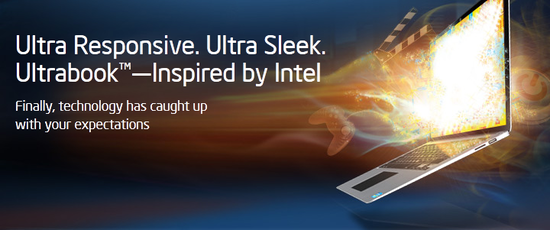Shortly after all Ivy Bridge desktop models had leaked it is time for the mobile versions to show up. Intel will start the launch on the mobile side with Core i5 and Core i7 processors, while the lower segment continues to use Sandy Bridge-based processors.
Ivy Bridge sre still way into the future and it is starting to lean toward a launch in April, and not March. Ivy Bridge will be Intel’s but also the world’s first processors at the 22nm node. Ivy Bridge will sport many minor improvements on the processor side, but graphics has been substantially improved. The theoretic performance of the graphics circuit in Ivy Bridge will be almost doubled from Sandy Bridge, which means the clock frequencies are staying at the same level.
The first mobile models has been uncovered by VR-Zone, and Intel will start off with quad-core models in April. One month later it will bring on the dual-core models. Overall the clock frequencies hasn not increased much, but we’re guessing that the new graphics circuit plays a role when it comes to the energy consumption.
| Model | i5-3320M | i5-3360M | i7-3520M | i7-3720QM | i7-3820QM | i7-3920XM |
| Cores | 2 | 2 | 2 | 4 | 4 | 4 |
| Threads | 4 | 4 | 4 | 8 | 8 | 8 |
| Clock frequency |
2.6 GHz | 2.8 GHz | 2.9 GHz | 2.6 GHz | 2.7 GHz | 2.9 GHz |
| Turbo frequency |
3.3 GHz | 3.5 GHz | 3.6 GHz | 3.6 GHz | 3.7 GHz | 3.8 GHz |
| L3 cache | 3 MB | 3 MB | 4 MB | 6 MB | 8 MB | 8 MB |
| Graphics | HD 4000 | HD 4000 | HD 4000 | HD 4000 | HD 4000 | HD 4000 |
| Graphics frequency |
650 MHz | 650 MHz | 650 MHz | 650 MHz | 650 MHz | 650 MHz |
| Graphics Turbo | 1.2 GHz | 1.2 GHz | 1.25 GHz | 1.25 GHz | 1.25 GHz | 1.3 GHz |
| TDP | 35 W | 35 W | 35 W | 45 W | 45 W | 55 W |
| Launch | May | May | May | April | April | April |
We can see that all models has moved above the 2.5 GHz mark, and some close in on 3 GHz. In Turbo mode most go above 3 GHz and we are wondering how all of this power is going to come to good use in a notebook? The graphics has more or less identical frequencies as previous models, but thanks to the new graphics architecture is expected to perform 60 percent better than what Intel offers with HD 3000.
There are no Core i3 or Pentium models seen. This means Ivy Bridge may become a rather exclusive product initially, and will only cover the upper performance segment for notebooks and Ultrabooks – while Sandy Bridge has to continue cover the lower and cheaper segment. It has new Celeron processors planned, but it looks like Sandy Bridge models.
It also has two Ultrabook processord planned – but also these are slated for a May launch since they are dual-core. Like before they will be rated 17W TDP and get the new HD 4000 graphics from Intel.

| Model | Core i5-3427U | Core i7-3667U |
| Cores | 2 | 2 |
| Threads | 4 | 4 |
| Clock frequency |
1.8 GHz | 2.0 GHz |
| Turbo frequency (2 cores) | 2.6 GHz | 3.0 GHz |
| Turbo frequency (1 core) |
2.8 GHz | 3.2 GHz |
| L3 cache | 3 MB | 4 MB |
| Graphics | HD 4000 | HD 4000 |
| Graphics frequency | 350 MHz | 350 MHz |
| Graphics turbo |
1.15 GHz | 1.15 GHz |
| TDP | 17 W | 17 W |
| Launch | May | May |
The processors ships at 1.8 GHz and 2.0 GHz respectively, but can stretch up to 2,8 GHz and 2,8 GHz in Turbo mode. Core i5 gets 3 MB L3 cache, while Core i7 gets 4 MB. Like the precursor the graphics comes clocked at 350 MHz, and climb up to 1150 MHz. These processors will only be available as BGA – for soldering directly to the motherboard.
On paper the processors don’t look very remarkable, but Ivy Bridge is more about increasing graphics performance than processor performance and reaching new frequency records. We have to say that things are looking rather good, and we look forward to seeing Ivy Bridge in notebooks. The question is if Intel will reach its goal of offering graphics good enough for most people?















